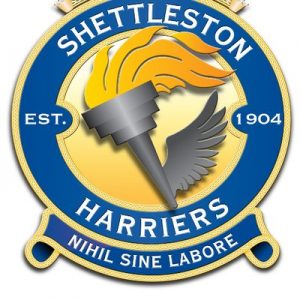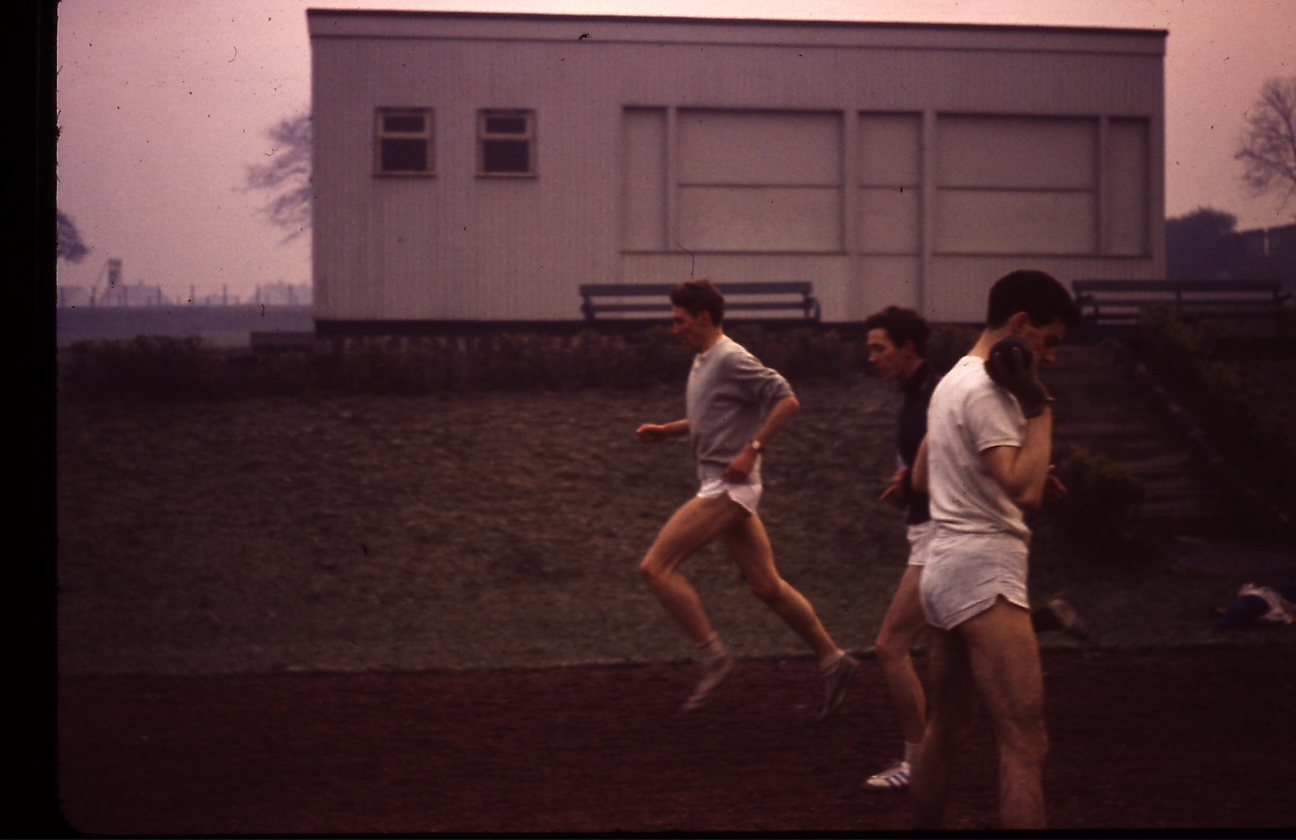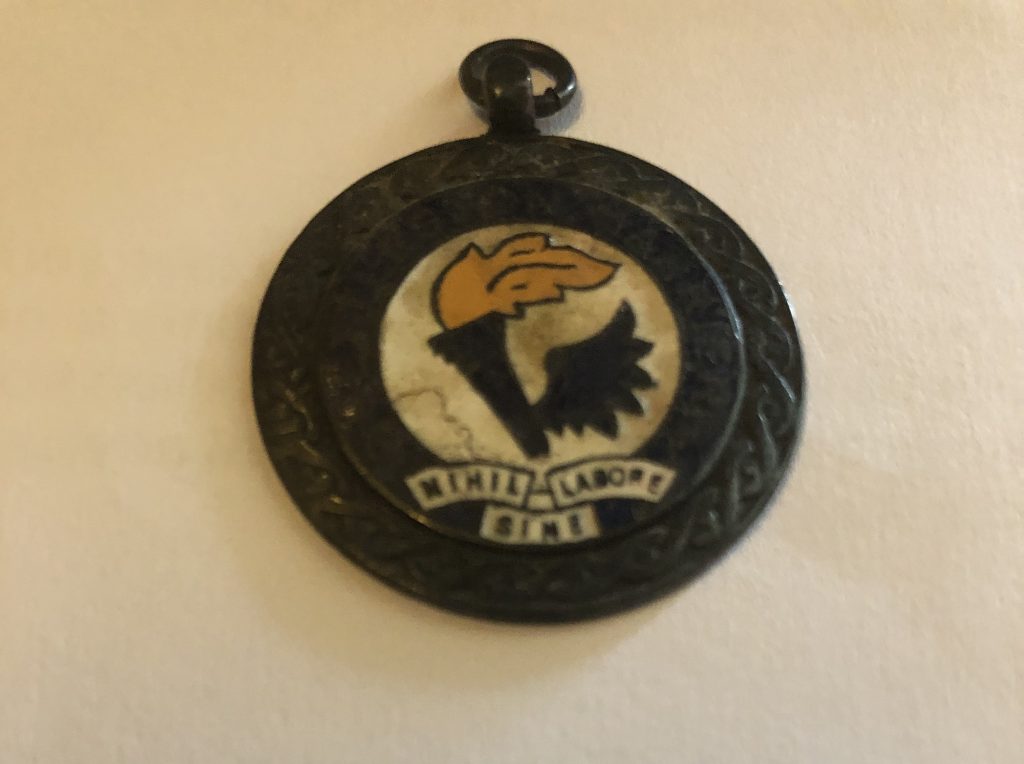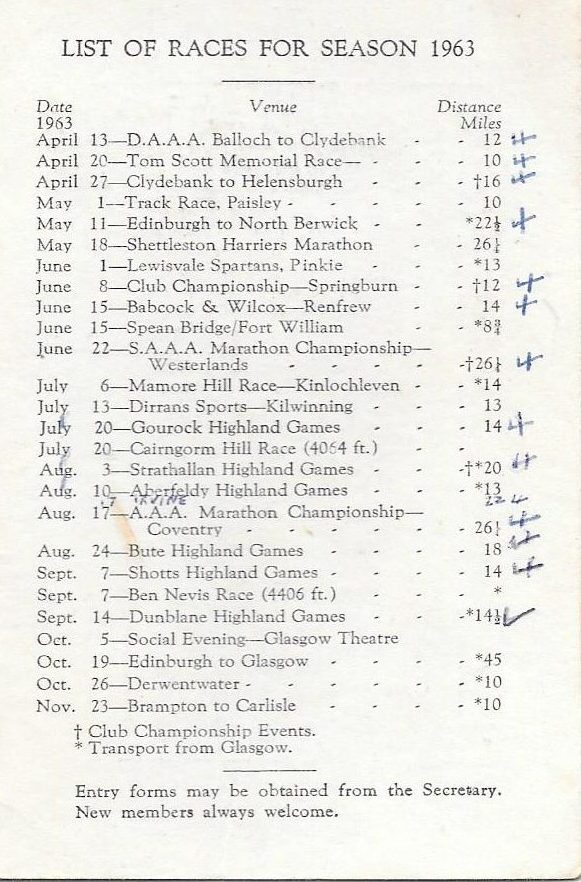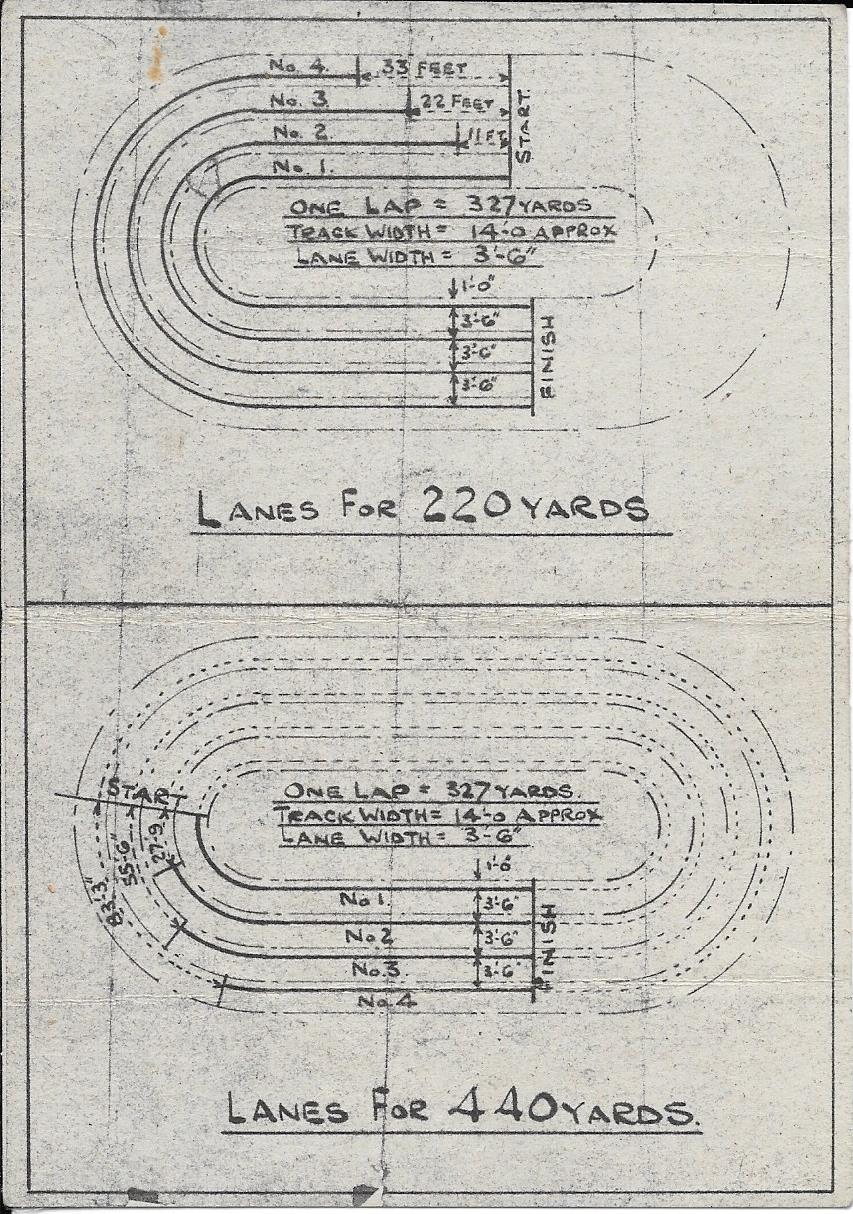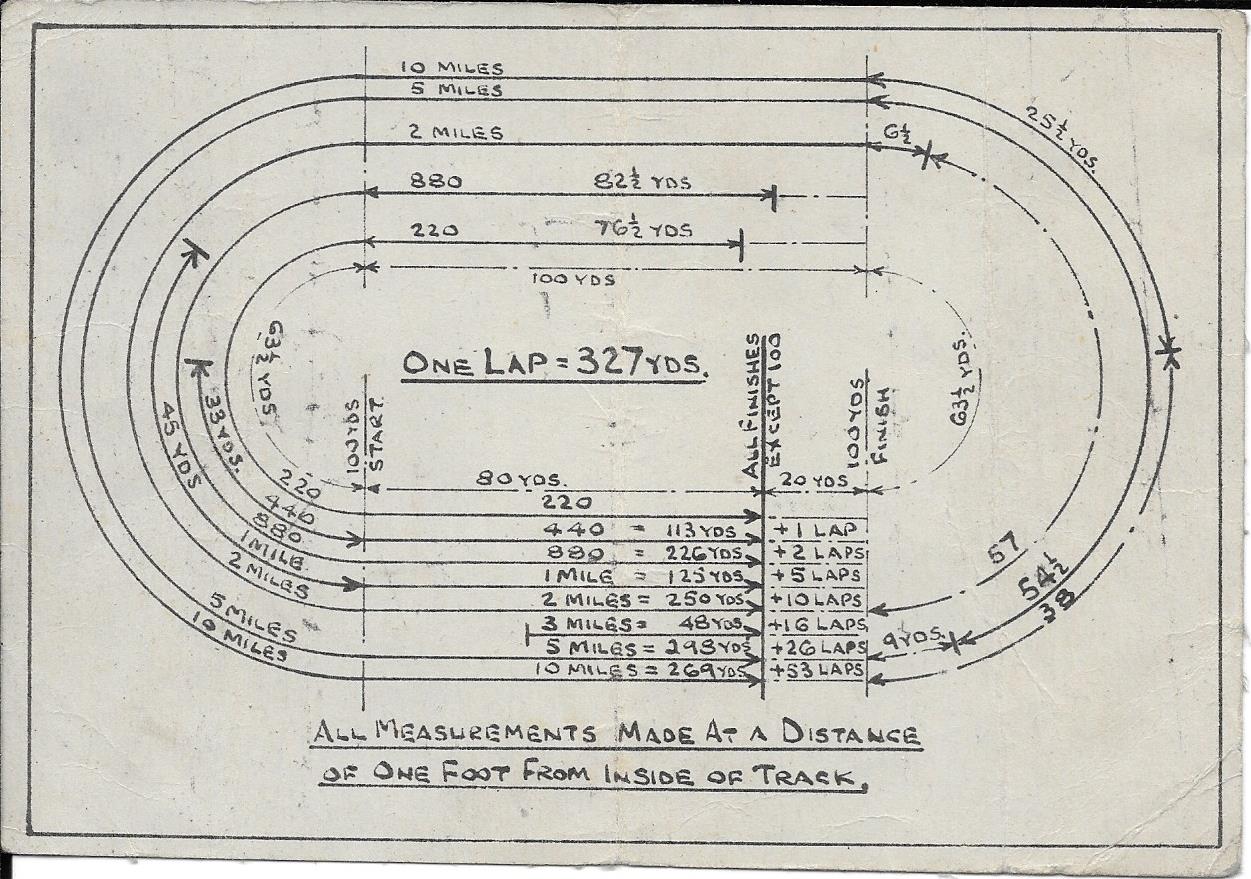Barrachnie and Shettleston Harriers were synonymous from 1926 when it was opened until the club’s track men moved to Crown Point in the 1980’s. It was a unique track and hosted many excellent fixtures with top class times recorded. The club owned the building but leased the land from the local authority and passed the building to the local rugby club in 2013. It had been at the heart of the club for 50 years but eventually the facilities and training habits caught up with it. It was a well known facility with athletes from all over Scotland training and competing there and is well worth a closer look.
The running track directory website has this to say about Barrachnie:
“The track still exists but has not been used for some time now. Due to lack of space, it is the odd length of 363 yards and is a virtually circular with very short straights although one straight is extended for sprints. It was the home track of Shettleston Harriers until the one at Crownpoint was opened. The track was used extensively in the 1950s and 60s and inter club fixtures with Clydesdale Harriers, Edinburgh Southern, etc. were held here. The surface was reported to be good and relatively good times were recorded on it.”
The entry comments on the odd length and attributes this to the lack of space but it was not the only track of this length in the city – the red blaes track at Mountblow was 330 yards and the as far as the shape was concerned, the track at Knightswood is also virtually circular in shape. Barrachnie had 4 lanes, and was 363 yards in length. It was opened on 2nd October, 1926, and the report on the official opening read:
“SHETTLESTON HARRIERS 10 MILES RELAY RACE
To mark the opening of their new headquarters at Gartocher Road, Shettleston Harriers on Saturday carried through an invitation relay race. After the new pavilion which was erected and furnished by club members, had been opened by Mr RM Bryson, Queen’s Park FC, an excellent start was offered by Mr W Docherty. Mr Tom Riddell, the SAAA mile champion, gave the promoting club a 30 yards lead from R Millar, Mauchline Harriers, with A Allan, Plebeian Harriers, a few yards further behind. On the next circuit SK Tombe gave the last named club premier position but the third round saw Shettleston Harriers again in front thanks to strong running by W Hart who sent his last man, JW Stanley, away with a useful lead which the latter maintained to win by almost 50 yards. Result: 1. Shettleston Harriers (Riddell, Anderson, Hart and Stanley) 61 min 12 sec; 2. Plebeian Harriers (Allan, Tombe, Connolly, Gunn) 61 min 19; 3. Mauchline Harriers (Millar, Dick, McHattie, Lamont) 61 min 45 sec
Hugh Barrow and Duncan Middleton training at Barrachnie with Cameron McNeish in the foreground.
There were hosts of quality athletes that passed through the doors and trained at and from Barrachnie. Many of them were not members of Shettleston Harriers. John Anderson, national coach, trained many athletes there including such as Hugh Barrow (Victoria Park), Duncan Middleton (Springburn), Hamish Telfer and Cameron McNeish (West of Scotland). There were also schools meetings held there by Shettleston Harriers as a recruiting measure and these were also well supported by schools from all over Glasgow.
But the track was unique. It was used for many Scottish League Meetings throughout the 50’s and 60’s with all the best clubs in the country coming with their top athletes to run on a track which had its full share of fast times. Edinburgh Southern Harriers, Bellahouston Harriers, Victoria Park AAC, Ayr Seaforth, Clydesdale Harriers, all the Universities came to Barrachnie. David Stevenson, Graham Stark and Ken Ballantyne from ESH, Fergus Murray and his team mates from EUAC, plus the best that all the Glasgow clubs had plus Finlay McCarvel (Ayr Seaforth), Jim McLatchie, Doug Edmunds from Jordanhill and many more. But in addition to the bread-and-butter fixtures, the club introduced several new events of their own.
THE WINTER TRACK MEETINGS
One of these initiatives was the first open athletics meeting in Scotland ever to be held in January. There were no permanent indoor tracks in Britain although some meetings were being held in makeshift facilities in England but the thought of sprinting, high jumping, pole vaulting or throwing the hammer in Scotland in January was pushing things a bit. Tom Mcnab, a triple jumper with Shettleston at the time, was one of the men behind the project which, against all the odds was successful. ‘Against all the odds’ included the structure of Scottish athletics at the time. The SAAA was the governing body for athletics, but in winter the responsible authority was the SCCU. Was the SCCU competent to give permission for a track meeting? Was the SAAA able to say what happened in winter? However it was sorted, permission was granted and the meetingwent ahead.
The first one was held on 31st January, 1959, and the top performer was a middle and long distance runner from Shettleston – Graham Everett won the 3000 metres from Bill Kerr of Victoria Park in 8:25.1. The other winners included Crawford Fairbrother who cleared 6′ 5″ in the high jump. The distances were a bit unusual for Scottish spectators and competitors alike – 60 and 120 yard sprints, 300 and 1000 yards and the aforementioned 3000 metres (the more usual distance was two miles). But the meeting was a success (120 competitors in total) with Fairborther’s high jump the outstanding feat of the afternoon – and perhaps of the year. The official history of Shettleston Harriers tells us that the officials called the high jump off because the sand in the landing pit had frozen solid but Fairbrother persuaded them to utilise a pile of red ash instead – and cleared 6′ 5″!
The next one on 30th Jan, 1960 featured Everett again who had a double victory, the 1000 yards (from J McLatchie and Mike Ryan), and the 3000 metres (From Mike Ryan and J McLatchie), Michael Hildrey who won the 300 yards and was second in the 60 yards, WM Campbell who won the junior 300 yards and Tom Mcnab who was second in both high jump and shot putt.
Hildrey, Everett and Fairbrother were in attendance a year later, 28th January 1961, when Hildrey defeated cubmate Ronnie Whitelock in the 100 yards, and Hay of Edinburgh University in the 300 yards, Everett won the three quarters of a mile from Morrison of Larkhall and McLatchie of Muirkirk as well as the two miles from McLatchie and Summerhill (Shettleston), Fairbroother won the high jump from DD Stevenson (EUAC) who himself won the discus and was second in the shot putt. Every one of these was a high quality athlete competing in the Scottish January weather on the outskirts of Glasgow. This might be seen as dedication but in 1962 an Irish athletes, competing in the colourse of Ayr Seaforth competed with distinction.
On 13th January, 1962, on a wet and windy afternoon, the distances were the most unusual yet and reflected the dimensions of the track more accurately than any yet. Ireland’s Colin Shillington won the 720 yards (1:34.7) and the 1020 yards (2:35.8) events – the latter from Everett who had won a 3600 yards event in 10:45. , Also in action were Hildrey (100 yards in 10.5), N Foster (won the triple jump and was second in the pole vault), DD Stevenson (won the pole vault with 12’0″). Despite the weather the numbers competing were good, and the quality was excellent.
Shettleston Harriers Schools Medal won by Hugh Barrow for third place in a 1963 schools meeting 600 yards behind Campbell and Billson
And so it went on – on 25th Jan, 1964, Eddie Knox of Springburn won the two miles f placerom a top field in 9:31, two miles, Sprinter Les Piggot was there , Wedlock won the half mile and mile, Fairbrother, DD Stevenson and Norrie Foster were all there; in 1965 (23rd January) the meeting had grown to 11 senior, 5 Youths and 4 boys events with many of the big names – Piggot, Graeme Grant, Edmunds, Fairbrother all present.
The meetings continued but it was, of course, a message to the governing body, whether SAAA or SCCU – that there was an appetite for winter athletics meetings in Scotland but it was another 10 years before the temporary track was installed at Bell’s Arena in Perth and another 10 after that before there was a permanent facility in the Kelvin Hall in Glasgow. Tom Mcnab and Shettleston Harriers were ahead of the game on this one.
THE SHETTLESTON MARATHON
The winter track meetings at Barrachnie continued but then along came the ‘marathon boom’ when there were marathons held all over Scotland from Galloway to Wick via Aberdeen, Dundee, Edinburgh, Glasgow, Inverclyde, Motherwell and other points of the compass. In the beginning was the SAAA Marathon – and it was the only annual marathon in the country but While the winter track meetings were going on, the club introduced their own marathon – preceding the boom by 10 years. Scotland had their third marathon in 1967 when the Inverness – Forres event appeared regularly on the Scottish Marathon Club calendar, but the one starting and finishing at Barrachnie was the earliest. The event ran from 1961 to 1971 and, apart from the first one in September 1961, was held in May. The first two were won by Andy Brown of Motherwell YMCA in 2:40:04 and 2:25:2:25:58, the third by Alastair Wood of Aberdeen in 2:25:56. Further marathons were won by Fergus Murray, Sandy Keith and Steve Taylor. The complete record is at this link .
Steve Taylor’s race certificate when he won in 1971: Time – 2:23:35
The Shettleston Marathon was a good race and fairly well supported by the road running fraternity. It was unlucky that the weather was not always favourable to long distance running but it served a purpose and at a time when there was only a single competitive race at the marathon distance in the country, and with the Commonwealth Games coming to Scotland in 1970, it was a welcome venture.
The availability of the Coatbridge track from 1975 and Crown Point Track from 1984 meant that attendance at the clubhouse was seriously affected. Crown Point Track was completed on 7th September 1984 and was by far the best track in Glasgow – the first synthetic surfaced track in the city – it was far ahead of the ageing facility at Barrachnie. Located in the east end of Glasgow, it was natural for Shettleton Harriers to move in that direction for track training head quarters while continuing to use the track in Gartocher Road. There were still enough numbers for the Tuesday and Thursday runs from the clubhouse but running costs led to a move to give it up in 1983.
It was in need of renovation and the club decided to do something about it. I quote from their history again. “At the beginning of July 1987 the Barrchnie track was the focus of attention as the club organised an event to raise funds to renovate the clubhouse. Under the slogan “Run a thousand miles, raise a thousand pounds”, scores of members and former members attempted to aggregate a thousand miles on the hard packed blaes surface in the space of 24 hours. The occasion was memorable for the massive goodwill shown to the club by friends, locals and former members. Graham Everett popped in with a generous donation, as did Jim Harkins. Bill Scally’s wife Jo did her bit on the track. Brian Scally made an (unsuccessful) attempt on Graham’s mile record for the track and the members of the local football team joined in the fun to mae up some miles. The highlight was the effort of Pat Houston, a Transport Policeman from Cumbernauld, in running solo for 24 hours, with permitted rest periods, helpng considerably towards the £1200 eventually raised.”
The improvements led to more usage for a time but there was not enough in the way of greater long term usage of the 50 year old building. A current club member says: “It got a mini up grade in the late 80’s but its time was gone as soon as Crownpoint opened.” It had been a central point for all club members – but unfortunately few clubs in the 21st century have this type of centre and members never really all get together as a club. Face book/emails /twitter have changed the face of athletics. The same athletes use different venues for different types of training. and access to better transport makes this possible.
Barrachnie should have had nothing going for it.
- The top tracks in the city were at Westerlands, Scotstoun and Helenvale; and in 1926 there were also good tracks at the major football grounds which were used for training by athletic clubs; big meetings were held at Ibrox was used for the Rangers Sports until 1962. Celtic Park was used for their Sports, while both plus Hampden Park were used for SAAA Championships.
- The Barrachnie track was an odd distance (363 yards), an unusual shape ( most called it ‘almost circular’ others called it ‘oval’), and had no real straight to talk of;
- It was difficult to get to from just about anywhere.
So why was it well known and why were such good times posted on it? You only need to look at the initiatives of the Shettleston committee:
- Frequent schools athletic meetings;
- The track was made available for the Central Athletics League for young male athletes in the 1950’s and 60’s;
- Coaches from outwith the club were encouraged to bring their squads at weekends to train there;
- The winter track and field meetings were the first of their kind ever to be held in Scotland;
- The Shettleston Marathon brought the top road runners to the east end of Glasgow – not for the value of the prizes but for the race itself.
These events were all successful: the good times were the result of good races with good athletes – not only that but on occasion there was a special attraction – an attempt on the Scottish 600 yards record or similar. The men on the club committees over the 50 years that it was the club headquarters were the secret. Every club has had top class men over the years but Shettleston seemed to have many who looked outward at the athletics scene rather than inward to their own wee corner. It was a good venue – but it was made by the club’s men.
Scottish Marathon Club fixtures, 1963
A Wee Addendum on Track Dimensions.
Many tracks appeared in Glasgow and its environs in the 20’s and 30’s and they were not all of the same dimensions. We have already mentioned the size and shape of Barrachnie and commented on Knightswood and Mountblow and it’s the latter that I will comment on. Given the size of the track – 327 yards – and the fact that standard distances had to be raced over, there had to be some way of measuring out the distances that would not be too time consuming for club championships, inter club contests and on occasion county or other championships. The track at Mountblow was like Barrachnie and Knightswood, a four lane track and the club had small cards with the dimensions and where the various events started and finished – first we have the layout for the 220 and 440 yards.
The meeting organiser could tell from the card (a) where the race started and finished and (b) what the stagger was for each lane. He would have cards with the same details for every race on the card that night. A kind of ‘ready reckoner’ for all the distances that could feasibly be held on the track was also drawn up.
These were drawn up by David M Bowman, a first rate official and administrator, for the track that he was familiar with: there would be similar arrangements for other tracks of less than 440 yards. That would of course include most highland games meetings which were on tracks of somewhere over 300 yards. With the shape of the Shettleston track, it was not an easy job to organise meetings with events at standard distances. Who said being an official was easy?
